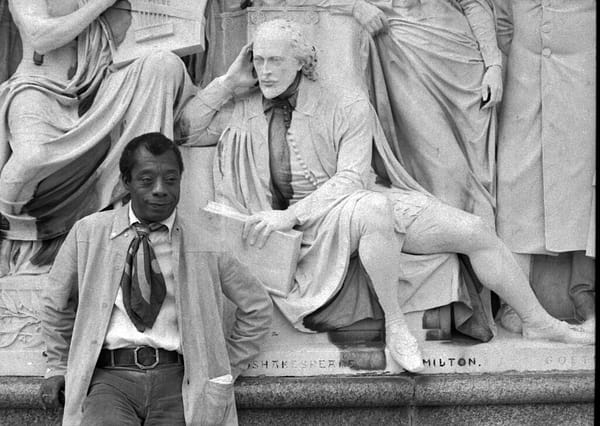Inventing Invention: Brad DeLong's Slouching Towards Utopia

In the 19th century, some of the world—the “global north”—began to grow rich. It began at a jog but, by the end of the century, it had become a sprint. As scientific, technical, and productive capabilities expanded beyond anyone’s wildest imaginings, some contemporaries did begin to imagine something more. What they saw at the end of the tunnel of material progress was a true utopia, where all conceivable human wants could be met with ample time left over for leisure.
A century and a half later, we have failed to reach the leisure society of Keynes, much less the classless society of Marx, or any of the other visions of heaven on Earth promoted by those utopians that grew up in the Victorian Era. For the historian Eric Hobsbawm, humanity made its only credible attempt to reach utopia in the “short twentieth century” from 1914 to 1991, in which time the Soviet Union rose and fell. In something of a direct response, economist Brad DeLong posits a “long twentieth century” from 1870—when, he argues, economic growth passed a crucial threshold—to 2010, the throes of the Great Recession. During this time, though we seemed at times to be racing towards utopia, over the whole period, and down to the present, we could at best be said to have “slouched” towards it.
DeLong’s book is self-styled as a “grand narrative” rather than a dry academic analysis. He offers a strong perspective, in contrast to a book like Mark Koyama and Jared Rubin’s How the World Became Rich, whose authors do offer a perspective of their own, but only after performing a long survey of the many competing perspectives on modern economic growth. Slouching Towards Utopia is in this way much more like Robert Gordon’s The Rise and Fall of American Growth; each book allows both the lay reader and the specialist to walk away with a greater grasp of the general economic history of the time period covered, and both offer a strong thesis that remains controversial among specialists.
Among economic historians, the precise timing of modern growth is a matter of some dispute. The classical point of view is that it all began with the Industrial Revolution in England in the late 18th century. Now, even those who might defend that timing are less likely to say it was as simple as what was going on in industrial manufacturing specifically, as tinkering and innovative breakthroughs occurred across a remarkable variety of domains. And nearly all agree that, whenever it might have begun, this growth became much faster in the second half of the 19th century.
DeLong’s story does not dispute the established facts that go into these other interpretations. His chronology is largely supported by the consensus among economic historians:
[T]here was more proportional techno-economic progress and change in a single year over the 1870–2010 period than in fifty years before 1500, and more than in twelve years over the period from 1500 to 1770, or more than in four years over 1770–1870.[1]
But beyond these less controversial descriptions, he advances a very strong thesis, both in terms of timing and in terms of causation:
What changed after 1870 was that the most advanced North Atlantic economies had invented invention. They had invented not just textile machinery and railroads, but also the industrial research lab and the forms of bureaucracy that gave rise to the large corporation. Thereafter, what was invented in the industrial research labs could be deployed at national or continental scale.
(. . .)Not just inventions, but the systematic invention of how to invent. Not just individual large-scale organizations, but organizing how to organize. Both were essential to the arrival of the integrated, command-and-control central planning of modern corporations.[2]
Great Britain and some of its neighbors and colonies had undoubtedly grown at an unprecedented pace from 1770 to 1870. But, according to DeLong, this was destined to end the way of all previous eras of temporarily heightened growth and innovation: the population would grow until the per-person gains were quite literally eaten away, according to a logic articulated by Thomas Malthus. What made the world after 1870 different was that the most advanced economies had uncovered a path to permanent prosperity; they had “invented invention.”
In a long and thorough book, DeLong spends remarkably little time defending this thesis, or even fleshing out the basic mechanisms by which the research lab and the corporation made possible the world-historic change that he documents so thoroughly. In the beginning he mentions that “One gathered communities of engineering practice to supercharge economic growth, the other organized communities of competence to deploy the fruits of invention.”[3] Later, he elaborates that inventors such as Thomas Edison and Nikola Tesla were able to make their impact because the research lab and the corporation took care of “the ten other roles that their predecessors had had to fill, from impresario to human resource manager. That work was left to the corporation. This made a huge difference. Invented technologies could be rationally, routinely, and professionally developed; and then they could be rationally, routinely, and professionally deployed.”[4]
The rationalization of invention and the routinization of diffusing innovations at scale; that is the basic logic behind the role of the research lab and the corporation in DeLong’s grand narrative. But the manner in which it was rationalized and routinized is explored in far less depth than, for example, the “war of the currents” between Edison and Tesla, and the “perhaps five to ten years’ worth of difference—in advancing electricity in the economy” that the outcome made, which “may have permanently shifted the economy into a somewhat different direction from the one in which it had been heading.”[5]
But how exactly did the research lab and the corporation empower these men to accomplish these tremendous feats? And why did no one think to gather “communities of engineering practice to supercharge economic growth” before 1870? It seems answers to these questions were left on the cutting room floor.
What DeLong does do, however, is no less valuable. Having established his theory of why it all happened, he moves on to what exactly happened, and how the world was transformed by this unexpected pivot from millennia of stagnation to a “long century” of slouching onward and upward.
The book’s ambitious promise of “An Economic History of the Twentieth Century” still manages to sell what its author delivers short. DeLong effortlessly jumps from the scientific details of the difference between alternating and direct current, to what those differences mean in terms of the cost of providing electricity at the scale of a city or town. He jumps from the tactical and organizational strength of the Germans in World War II, with examples drawn from early and late in the war, to the overwhelming superiority of America’s war production to the entire Axis combined. He offers detailed diagnoses of the Great Depression, the Great Inflation, and the Great Recession, as well as strong prescriptions for how they ought to have been handled, yet is reasonably understanding of the actual state of knowledge and uncertainty faced by the key decisionmakers at the time.
He encourages his readers to constantly consider the conflicting moral perspectives of Friedrich Hayek on the marvels of the market and Karl Polanyi on its dangers in order to evaluate the flow of events he narrates from a broader perspective than either. It is difficult to conceive of a reader who will fail to come away from Slouching Towards Utopia with their knowledge and their perspective enlarged; the breadth of what is covered is staggering.
While DeLong does not flinch from the horrors of his “long twentieth century,” nor from the challenges we still face ahead of us, he strikes a tone of measured optimism. Given the unprecedented human accomplishments detailed in the book, it is hard to see how it could be otherwise. Rather than accepting pessimistic narratives of stagnation in the global north or inevitable climate catastrophe, we ought instead to take a page from DeLong’s “grand narrative” and get to thinking about the steps we might take to press ahead—even if we must do so at a slouch, and even if we never quite arrive at utopia in the end.
[1] DeLong, J. Bradford. Slouching towards Utopia: An Economic History of the Twentieth Century. New York: Basic Books, 2022. 82.
[2] Ibid, 62.
[3] Ibid, 12.
[4] Ibid, 35.
[5] Ibid, 70.
Featured Image is Nikola Tesla with his equipment, by Dickenson V. Alley




